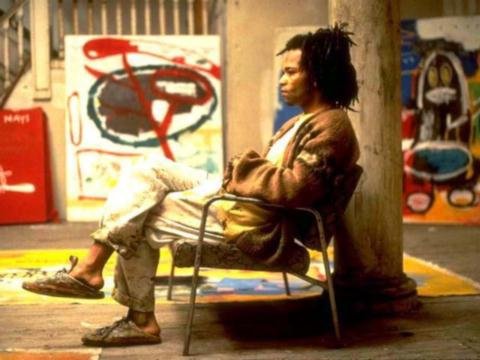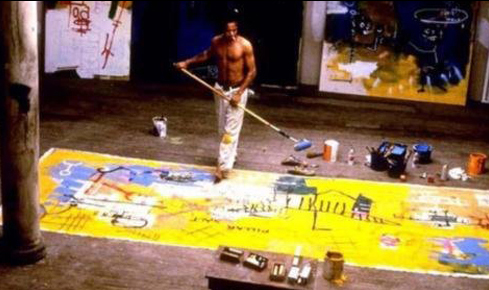
After grad school I moved back to New York and found a place to live and work, which I arranged as a large studio and a small living space. Then when everything was in its right place, I quickly got down to not painting. I told myself I would paint as soon as I figured out what to paint on and what to paint with. I spent hours contemplating the pros and cons of various materials. Should I paint on stretched canvas or un-stretched; artist's canvas or painting tarps; on the floor or on the wall. If I went with stretched should I buy cheap pre-made stretchers so I wouldn't feel precious with my materials or should I invest in custom made stretchers? If the latter, should I stretch the canvas or have them do it; should they gesso it or should I? Maybe I should just paint on paper. Should I buy a roll of photo background paper or an archival roll of Arches? Then there was paint. Oil or acrylic? Acrylic was easier to use, less toxic to live with, and easier to clean up but oil was the medium of Art History. My heroes used oil. Would my work ever be as good if I used acrylic? I'm serious, this is how I spent my time. Anything not to face the studio.
Then one day I rented Julian Schnabel's Basquiat. I just watched it again for the first time in over ten years and found it as good a kick in the pants now as it was then. Forget about whether or not it's really a portrait of Schnabel rather than his friend. It was the portrayal of Basquiat's process that broke through my procrastination. It appears that Basquiat didn't have my materials dilemma. Instead, he is so full of stuff to paint that while seated at a diner, he pours syrup on the table, spreads it out with a menu and starts drawing with his fork, "pancake table drawing." Immediately, oil versus acrylic began to seem very unimportant. We see Basquiat drawing his Samo graffiti all over 1980's New York, painting on whatever he could find, old windows, doors, a dress, a refrigerator door. My materials dilemma was almost embarrassing at that point. I realized I was clearly just afraid of painting and that I just needed to f#@!ing paint something on whatever, with anything.

Still from "Basquiat"
I especially love the painting scene in Anina Nosei's basement, Basquiat's first studio. There is a large un-stretched clean white swathe of new canvas on the floor that makes me drool. The artist dips a brush in a can of house paint and just starts putting down areas of color, green, then bright yellow with seemingly no fear, no preciousness and no timidity. Cut to later. New work is leaning against once bare walls and the painting on the floor is now much further along. Basquiat uses spray paint, oil stick, and a house paint roller coated in blue paint. With jazz playing in the background you can't help but think of the Hans Namuth film of Pollock painting on glass. But then the soundtrack switches to Grandmaster Melle Mel's "White Lines," jump cuts show the room blossoming more and more paintings, cans of paint and open books. He's working many canvases simultaneously. Sure, it doesn't really end until Basquiat sits back and smokes some cocaine, but let's skip that for now.

Still from "Basquiat"
In a dream sequence later on, Basquiat nods off from heroin and hallucinates a sculpture of stacked tires. First there's one tire and then, with Bewitched-style special effects, one by one the tire stack grows. The effect is imperfect as the canvas tarp covering the floor moves with each cut, presumably as the prop people walked on it to add the next tire. It's a messy and loose time lapse and I love that Schnabel left it that way, because it has a painterly quality that seems to refer both to Basquiat's work and state of mind. Later he takes a big brush loaded with white paint and whitewashes the tires. They look like a tiered cake dripping with frosting.
The artist's estate wouldn't grant Schnabel permission to use real Basquiats in the movie, so he painted all of them himself. They are gorgeous and I've always wanted to know what happened to them after filming ended. I would love to have a Schnabel Basquiat! As Dennis Hopper, playing Bruno Bischofberger, says,"They are superfantastic."
Liz Markus is a New York based artist. Her third solo show in New York is in November at ZieherSmith gallery. Her web site is lizmarkus.com

Liz Markus painting, Marylin Minter 2010